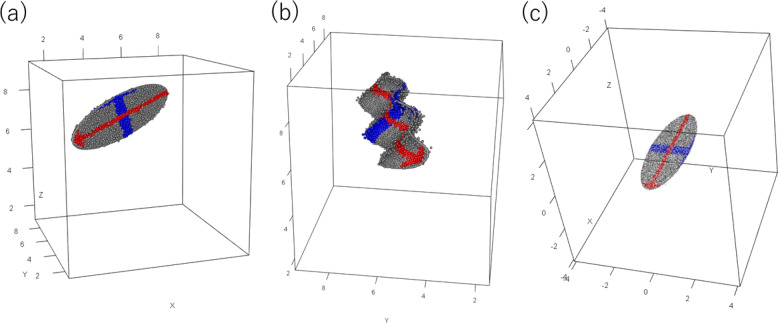Fig. 6.
Linear nonlinear transformations. a Linear transformation. The data are originally in three-dimensional space. The object of interest is a flat disk with bumps. After linear transformation, the disk is placed in two-dimensional space as shown in (c), and the bumps on the disk are perpendicular to the plane of the disk. When the two-dimensional space for the disk is selected for the principal components, the third axis is discarded as the noise axis, and the bumps on the disk are ignored as noise. b Nonlinear transformation. The data comprise a wavy disk with bumps on it. A nonlinear method transforms the wavy disk into a flat disk as (c), and places the flat disk in two-dimensional space. Again, the bumps on the wavy disk can be discarded as noise

